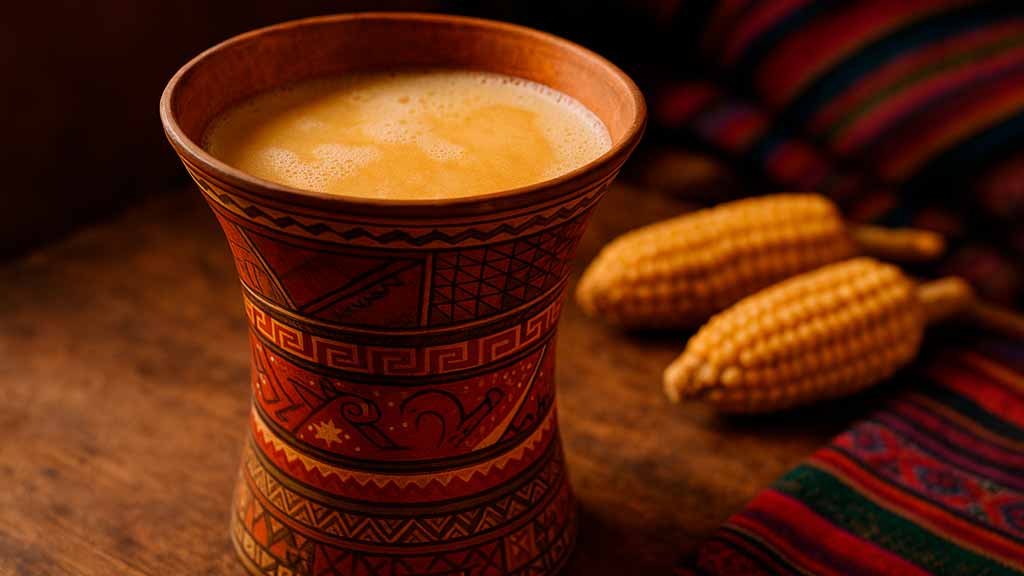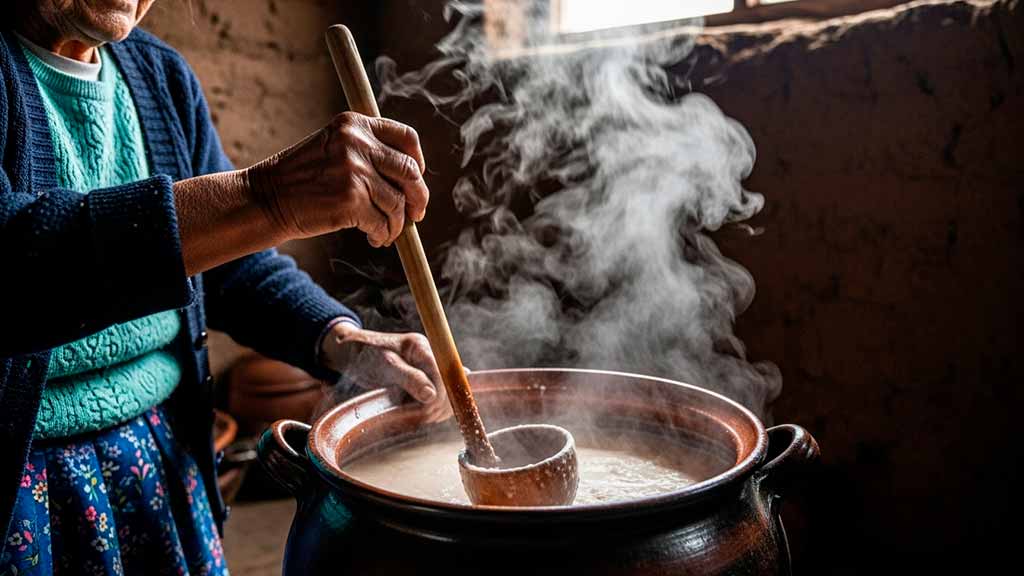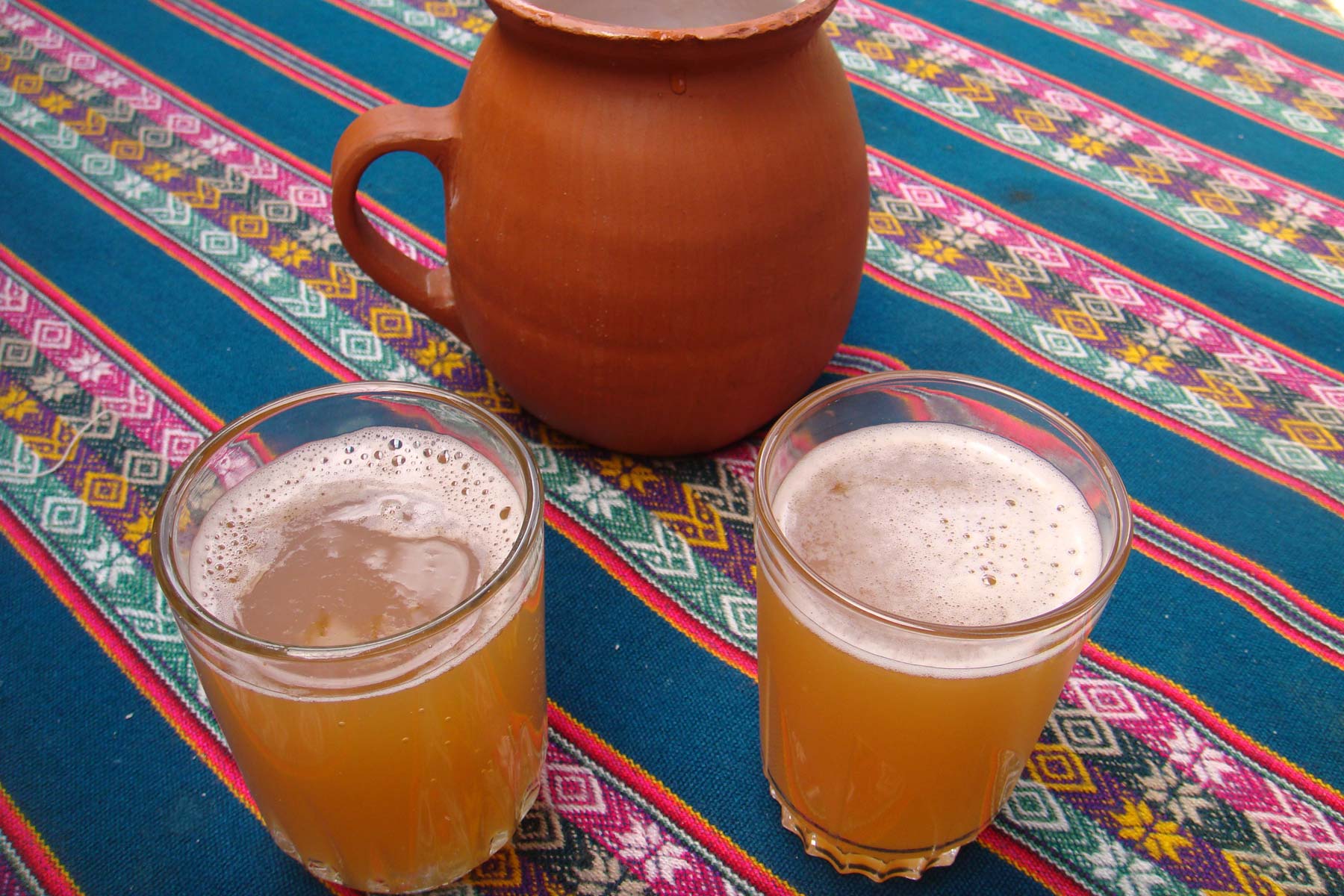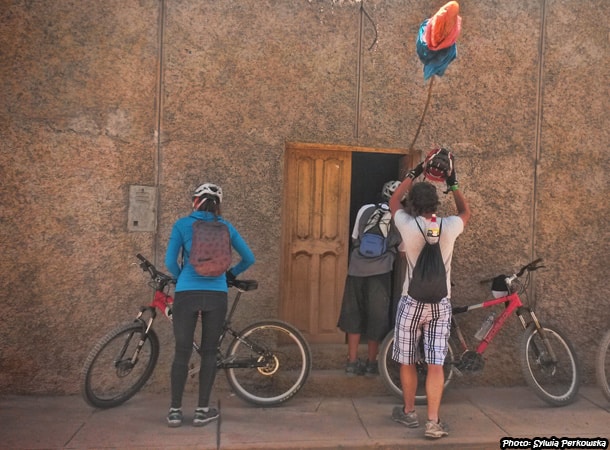In the heart of the Andes, long before the world knew industrial wine or beer, a golden, frothy beverage already existed that was the soul of a civilization. This is not just a drink; it is an echo of the past, a community bond, and an offering to the earth. Today, we delve into Chicha de Jora, the authentic corn beer that has nourished the spirit of Peru for thousands of years.
More than a simple fermented beverage, Chicha de Jora is a liquid testament to Andean history. Its story doesn’t begin in a modern brewery but in the sun-drenched cornfields of the Sacred Valley and in the wise hands of those who, generation after generation, have preserved its recipe and its meaning.
A Divine Gift from the Incas and Pachamama
A legend, passed from parents to children, tells that chicha was born from a divine accident. During the reign of the Inca Túpac Yupanqui, torrential rains soaked the corn grains stored in silos. Warmed by the sun, the corn germinated and fermented, producing a wort with a peculiar aroma. It was considered spoiled and ordered to be discarded.
However, in the Andean worldview where nothing is wasted, a local inhabitant, wracked with hunger and thirst, found the concoction and drank it. The result was a feeling of euphoria and well-being that revitalized him. Thus, what was considered waste was revealed to be a sacred drink, a gift from the Pachamama (Mother Earth). It soon became a favorite of the Inca nobility and a central element in their ceremonies.

What Does Chicha de Jora Taste Like?
If you’ve never tried it, you’re likely wondering about its flavor. Forget any notion of conventional beer. Chicha de Jora has a unique profile: it is slightly sour, with a subtle sweetness from the corn and a very refreshing effervescent touch. Its consistency is denser than industrial beer, and its color varies from a pale yellow to a deep ochre. Each chichería (a place where it is made and sold) has its own recipe and fermentation “point,” so you will never taste two identical chichas.
The Heart of Ritual and Community
The importance of Chicha de Jora transcends its flavor. It is the drink of reciprocity and celebration. According to Andean custom, before taking the first sip, it is an act of respect to spill a small portion on the ground. This gesture, known as the challa, is an offering to the Pachamama, a thank you for the harvest and for life itself.
“When you share a glass of chicha, you’re not just drinking. You are reaffirming a bond with the earth and with the person next to you,” Lucho, one of our most beloved guides in Cusco, always tells us. In Andean festivities, such as the Inti Raymi (the Festival of the Sun), chicha is indispensable, flowing to seal community ties and honor the Apus, the spirits of the mountains.

How is Traditional Chicha de Jora Made?
The artisanal process is a patient art that reveals a deep connection with natural cycles. Although variations exist, the traditional method follows fundamental steps that have been passed down for generations, primarily by women, the guardians of this tradition.
1. Germination of the Corn (The Jora) The first step is to make the jora. Yellow corn kernels are selected, moistened, and left to germinate in the dark for several days, often covered with leaves or cloth. This process activates the enzymes that convert starch into sugar.
2. Drying and Milling Once the sprouts reach the proper size, the germinated corn is dried in the sun on cloth blankets. It is then coarsely ground.
3. Slow Cooking The ground corn is boiled in large clay pots with plenty of water for hours. It is a slow and patient cooking process, often over a wood fire, where the liquid reduces and its flavors concentrate. Sometimes other grains like quinoa or barley are added to give it more body.
4. Filtration The resulting wort, called upí, is filtered using large cloths or straw baskets to separate the liquid from the solids. This residue is often reused to feed animals.
5. Fermentation The sweet, thick liquid is poured into chombas or puyños, large ceramic jars. Here, the magic happens. It is left to ferment at room temperature for several days. A short fermentation (1-3 days) produces a young, sweet chicha called ligera. A longer fermentation (a week or more) results in a chicha fuerte, or “strong chicha,” with a higher alcohol content and a more acidic, complex flavor.
In Cusco and the Sacred Valley, if you see a house with a long pole that has a red bag or flowers at its tip, it is the unmistakable sign: fresh, homemade chicha is sold there. Entering one of these picanterías or chicherías is one of the most authentic experiences a traveler can have.
To drink Chicha de Jora is, in essence, to drink history. It is an act of connection with a culture that sees the sacred in the everyday and finds in a simple grain of corn the power to unite its people and celebrate life. The next time you are in Peru, look for that red flag and dare to taste the true flavor of the Andes.
Overwhelmed by Planning? Let Us Guide You.
Organizing a trip can be complex, filled with doubts about what is authentic and what isn’t. At Inka Jungle Tour, we don’t just take you to places; we connect you with the essence of Peru. We design experiences that provide peace of mind, knowing that every detail is handled by ethical, local experts. Let’s chat on WhatsApp and create your dream journey together.


